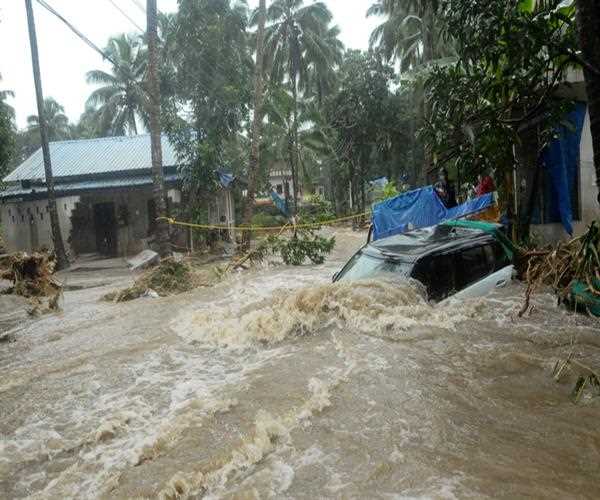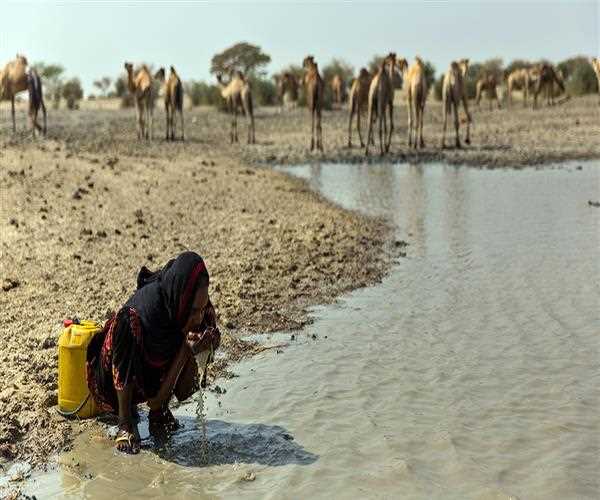
26-Jul-2023 , Updated on 7/26/2023 5:32:07 AM
Role of climate change in increasing flood frequency
Highlights
- Climate change is contributing to an increase in flood frequency worldwide, impacting both developed and developing regions.
- Rising global temperatures lead to the melting of glaciers and ice caps, causing an influx of water into rivers and seas, exacerbating flood events.
- Intensified storms and heavy rainfall are linked to climate change, resulting in more frequent and severe flooding incidents.
- Sea-level rise due to climate change leads to higher storm surges and coastal flooding, particularly affecting low-lying areas and coastal communities.
- Deforestation and land-use changes further exacerbate floods by reducing natural water absorption and increasing surface runoff
Climate change is an undeniable reality that continues to shape the world we live in. The consequences of rising global temperatures are felt in various ways, with one of the most evident and alarming impacts being an increase in the frequency and severity of floods. Floods, which have historically occurred due to natural factors like heavy rainfall and river overflow, are now becoming more frequent and intense as a result of human-induced climate change.
Understanding the Connection between Climate Change and Floods
Floods are the result of excessive water accumulation, often overwhelming the natural drainage systems and leading to widespread inundation of land. While floods have occurred throughout Earth's history, the recent surge in their frequency and intensity is closely tied to climate change. The primary driver of this link is the increase in global average temperatures, which has a range of interconnected impacts on the hydrological cycle.
- Melting Glaciers and Ice Sheets- As the planet warms, glaciers and ice sheets in polar regions and mountain ranges are melting at an accelerated pace. The massive influx of meltwater into the oceans contributes to rising sea levels. Consequently, coastal regions are at higher risk of flooding due to storm surges, high tides, and more frequent extreme weather events.
- Changes in Precipitation Patterns- Climate change affects regional precipitation patterns, leading to altered rainfall behaviors. In some areas, there are more intense and prolonged rainfalls, increasing the likelihood of flash floods. Conversely, other regions may experience prolonged dry spells, which exacerbate the risk of floods once rain does arrive, as the hardened soil is less able to absorb water.
- Increased Intensity of Storms- Rising global temperatures fuel the intensification of storms, particularly tropical cyclones and hurricanes. These extreme weather events can bring colossal amounts of rainfall within a short period, leading to catastrophic flooding in affected regions.
- Snowmelt Timing- In regions that experience snowfall, climate change can alter the timing of snowmelt. Warmer temperatures cause earlier and faster snowmelt, which can overwhelm river systems, leading to spring flooding downstream.
- Sea Level Rise- As global temperatures rise, the thermal expansion of seawater, coupled with the melting of ice, contributes to the overall rise in sea levels. Low-lying coastal areas are particularly vulnerable to flooding as sea levels encroach further inland.
Impacts on Human Societies
The increasing frequency and severity of floods have significant impacts on human societies worldwide, particularly in densely populated and vulnerable regions. Some of the key consequences include:
- Loss of Life and Property- Floods can result in loss of life and property damage on an unprecedented scale. The destruction of homes, infrastructure, and livelihoods can lead to long-term economic and social repercussions for affected communities.
- Displacement and Migration- Severe floods often force people to leave their homes and seek safer ground. The displacement of communities can trigger migration and exacerbate existing social tensions, both within and between countries.
- Water Contamination- Floodwaters can carry pollutants, sewage, and hazardous chemicals, contaminating water sources and posing serious health risks. Waterborne diseases become more prevalent in the aftermath of floods, impacting the well-being of affected populations.

- Agriculture and Food Security- Floods can devastate farmland and disrupt food production, leading to food shortages and price hikes. This can lead to food insecurity, especially in developing countries where agriculture plays a vital role in the economy.
- Infrastructure Damage- Floods can damage critical infrastructure such as roads, bridges, and utilities, disrupting essential services and hampering recovery efforts.
On the positive note, addressing the growing frequency of floods requires a combination of adaptation and mitigation strategies. Mitigation efforts focus on reducing greenhouse gas emissions to limit further climate change, while adaptation measures seek to prepare communities to cope with the consequences of climate change.
- Mitigation- Governments, industries, and individuals must work together to reduce carbon emissions through various means, such as transitioning to renewable energy sources, improving energy efficiency, and promoting sustainable land-use practices. International agreements like the Paris Agreement aim to foster global cooperation in tackling climate change.
- Flood Risk Management- Investing in flood risk management strategies is crucial to protect vulnerable areas and populations. This includes building and maintaining resilient infrastructure, establishing early warning systems, and promoting responsible urban planning to minimize exposure to flood-prone areas.
- Reforestation and Ecosystem Restoration- Forests and wetlands act as natural buffers against flooding. Reforestation efforts can help absorb excess water and reduce soil erosion, while wetland restoration aids in floodwater retention and purification.

As we face the consequences of climate change, the call for global collaboration and immediate action grows stronger. It is only through concerted efforts, across borders and sectors, that we can effectively confront the role of climate change in increasing flood frequency and safeguard the well-being of future generations.

SEO and Content Writer
I am Drishan vig. I used to write blogs, articles, and stories in a way that entices the audience. I assure you that consistency, style, and tone must be met while writing the content. Working with the clients like bfc, varthana, ITC hotels, indusind, mumpa, mollydolly etc. has made me realized that writing content is not enough but doing seo is the first thing for it.
Join Our Newsletter
Subscribe to our newsletter to receive emails about new views posts, releases and updates.
Copyright 2010 - 2026 MindStick Software Pvt. Ltd. All Rights Reserved Privacy Policy | Terms & Conditions | Cookie Policy